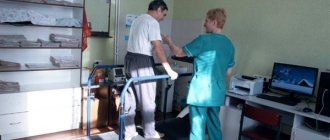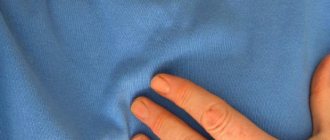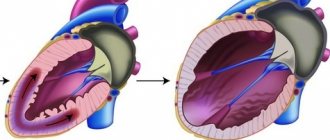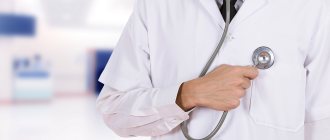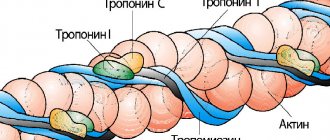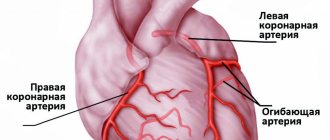Myocardial infarction is an extremely dangerous condition, often leading to serious complications and death of the patient. Older people are especially at risk of developing it. The likelihood of a successful outcome directly depends on the speed of medical care. Patients with myocardial infarction require round-the-clock care during the acute period and long-term rehabilitation after discharge from the hospital. It is advisable that all this time the patient be under the supervision of a specialist with a medical education. The patient's relatives have to combine caring for him with work, family affairs, and personal needs. Because of this, the quality of care decreases and the risks of complications increase. The help of professional nurses in a hospital or rehabilitation center can solve this problem. Proper care after a heart attack speeds up the patient's return to normal life.
Goals and objectives of rehabilitation
Healed tissue has limited functionality, which leads to circulatory failure. The main goal of recovery after myocardial infarction is to adapt the body to new conditions. Program objectives:
- restoration of the cardiovascular system;
- psychological preparation of the patient, including the mindset for long-term rehabilitation in compliance with all doctor’s recommendations;
- prevention of possible complications - myocarditis, rhythm disturbances, aneurysm;
- general strengthening, preparing the patient’s body for stress, restoring physical indicators;
- return to work and a full life.
Features of rehabilitation
The most acute period usually lasts up to six hours from the moment of the attack, the acute period - up to seven days. Scarring takes 28 days. Rehabilitation after a heart attack takes place in several stages, requiring the patient to give up bad habits and review all the main aspects of life:
- lifestyle;
- physical activity;
- diet.
The psychological attitude is of great importance. The duration of rehabilitation at the inpatient and outpatient stages depends on the patient’s condition. The final stage has no deadline - it lasts a lifetime.
Recovery methods
Basic means of rehabilitation after myocardial infarction:
- drug treatment of circulatory disorders;
- Exercise therapy and physiotherapy;
- psychological support and training at a health school for patients with coronary artery disease;
- Spa treatment.
The doctor develops a recovery program after myocardial infarction individually, taking into account the patient’s condition:
- the extent of the lesion (small focal or transmural infarction can be diagnosed);
- localization of ischemic necrosis (apex, septum, wall are affected);
- presence of concomitant diseases.
Definition of clinical group
There are three clinical groups of patients:
- 1 (mild) – the body responds normally to stress, there are no symptoms of heart failure, conduction and rhythm are preserved;
- 2 (moderate) – against the background of arterial hypertension, drug therapy is required, conduction disturbances, heart failure of the 2nd degree, and a permanent form of atrial fibrillation are diagnosed;
- 3 (severe) – a thrombus is present in the heart cavity, ventricular rhythm disturbances are detected at rest and during exercise, the patient is diagnosed with acute aneurysm and heart failure of 3-4 degrees.
Physical rehabilitation
Recovery is impossible without a gradual and systematic expansion of physical activity. Prolonged bed rest increases the risk of developing congestive pneumonia and thromboembolic complications. Lack of physical activity leads to disruption of the gastrointestinal tract and weakening of muscles. This increases the duration of rehabilitation and negatively affects the quality of life.
Taking into account the type of response, a physical therapy program is selected. The intensity of the load is determined individually. They increase gradually with constant monitoring of all indicators.
Psychological rehabilitation
A heart attack is a disease that requires immediate hospitalization. The need for long-term treatment, fear of death, and restriction of activity lead to serious disturbances in a person’s psychological state. This explains the importance of conducting psychological and psychotherapeutic work with the patient.
In addition to the help of professionals, support from loved ones is also required. This allows you to avoid neurosis and depression, which negatively affect health and adaptive capabilities.
Patients often cease to correctly assess their capabilities. There are two extremes: they are afraid of any physical activity or exceed the permissible limits. Here you also have to work with a psychologist.
Drug therapy
Drug therapy during the rehabilitation period is necessary for:
- blood pressure control;
- prevention of angina pectoris, arrhythmia;
- normalization of lipid metabolism and blood clotting;
- treatment of chronic heart failure.
Main groups of drugs:
- antiarrhythmic - used to prevent disturbances in the rhythm, frequency, and sequence of heart contractions;
- antiplatelet agents - used to prevent thrombosis, reduce the risk of strokes and heart attacks;
- beta-blockers – reduce myocardial oxygen demand;
- hypotensive - they are necessary to normalize blood pressure in hypertension;
- nitro drugs – effective for angina pectoris;
- statins – prevent the formation of atherosclerotic plaques and serve as the prevention of atherosclerosis.
Drug therapy is prescribed by a cardiologist. He monitors the patient’s condition and, if necessary, adjusts the treatment program.
Prevention
Rehabilitation after a heart attack will be incomplete if the patient does not eliminate risk factors. Your lifestyle will have to change. Necessary:
- stop smoking - nicotine negatively affects the inner lining of blood vessels (endothelium), increases cholesterol levels (low-density lipoproteins), causes vasospasm, increases blood pressure;
- minimize alcohol consumption (no more than 30 g for men, 20 g for women) or completely abandon it - alcohol increases blood pressure, causes arrhythmia, tachycardia, has a toxic effect, can provoke a heart attack and death;
- give up unhealthy foods, control your weight (body mass index should be between 25-27 kg/m2).
When preparing your diet, it is necessary to reduce the proportion of animal fats - they contain cholesterol. Smoked meats, canned food, and pickles are excluded. Products are steamed, stewed, baked. Frying is excluded. The basis of the menu after a heart attack:
- sea fish;
- lean meats;
- fruits and vegetables;
- nuts;
- whole grain cereals;
- wholemeal bread;
- dairy products;
- beans, lentils;
- olive oil.
Who is at risk?
Myocardial infarction develops in people with coronary heart disease, which most often affects older people, especially men. Narrowing or blockage of the coronary arteries leads to impaired circulation and necrosis of areas of the myocardium.
The risk of heart attack is higher in patients:
- with a hereditary predisposition;
- diabetes mellitus;
- overweight;
- arterial hypertension;
- rheumatic carditis;
- bad habits (including passive smoking);
- atherosclerosis;
- inflammatory bowel diseases;
- exposed to frequent and prolonged stress.
The likelihood of relapse is especially high in people who have already had a myocardial infarction. It is advisable for an at-risk patient with coronary artery disease to be cared for by an experienced caregiver, for example in a nursing home. She will be able to recognize the signs of myocardial infarction in time, provide proper first aid and organize care after the attack.
Stages and terms of rehabilitation of patients with myocardial infarction
In cardiological practice there are three stages:
- inpatient - the patient is in the intensive care unit for up to three days, he spends about two weeks in the cardiology department;
- inpatient-outpatient – its duration depends on the severity of the condition (usually 28 days);
- remote (supportive, outpatient) – people who have had a heart attack are monitored by a cardiologist.
Hospital treatment
The inpatient treatment stage begins from the moment the patient is admitted. It involves being under constant observation, first in the intensive care unit, then in the cardiology department. During this period, intensive treatment is carried out. On the first day, physical exercise is contraindicated. From the second, primary physical skills begin to be restored with the help of exercise therapy (under the supervision of a therapeutic exercises instructor).
The first 2-4 days of exercises are performed in a lying position. The patient can:
- bend/extend fingers and toes (up to eight times);
- Without lifting your feet from the bed, bend your knees and straighten them (up to six times);
- lower your legs bent at the knees to the left and right (up to six times);
- perform other simple exercises recommended by the instructor.
The patient must rest before starting the next exercise - it takes from 10 to 30 seconds.
After transfer to the cardiology department, physical activity expands. From days 4 to 12, the second stage of exercise therapy begins. The patient performs the complex in a hospital, sitting in bed. It is recommended to do:
- not sharp turns of the head left and right (up to 10 times);
- raising your arms forward and up, then returning to the starting position (up to five times);
- movement of the feet forward/backward without lifting off the floor (up to 15 times);
- other simple movements included in the exercise therapy complex.
At home, the patient also performs a set of exercises with a dosed and systematic increase in load. It is convenient to use special mobile applications.
Along with physical treatment, psychological support is provided. The patient learns about his disease, the correct lifestyle and the changes that have occurred in the body.
Inpatient-outpatient recovery
The patient is ready for the inpatient-outpatient stage after discharge from the hospital. By this time:
- his condition becomes stable;
- motor activity expands (the patient can walk up to 500 m in steps).
Recovery from illness is possible in a specialized sanatorium or in a cardiac rehabilitation center. The patient is referred for sanatorium-resort treatment by a doctor and a medical advisory commission based on a conclusion from the hospital. There he goes:
- training at the health school - individual and group classes are provided;
- psychotherapy;
- drug therapy - special medications, metabolic agents, vitamin and mineral complexes are prescribed;
- physiotherapy (electrophoresis, baths, thermal power station) – the course includes 10-15 procedures.
An important stage in the patient’s recovery is physical rehabilitation after myocardial infarction. Massage, exercise therapy according to a more intensive program, classes on special simulators, and measured walking are indicated. To select exercises, at the first stage the patient undergoes a test:
- a load is prescribed - walking for six minutes, an exercise bike, a treadmill (walking);
- The body's reaction to it is monitored - the patient's degree of fatigue, the presence of shortness of breath, blood pressure and pulse indicators, ECG.
In accordance with the results obtained, the doctor determines the type of response:
- physiological – moderate fatigue, blood pressure within normal limits taking into account the load;
- intermediate – slight shortness of breath, fatigue disappears within five minutes, moderate changes on the ECG, disturbances in blood pressure and pulse with recovery within 10 minutes;
- pathological – severe shortness of breath, fatigue, chest pain, ECG changes, prolonged increase in blood pressure/pulse limit.
Self-recovery
The long-term (maintenance) stage begins from the moment the patient’s condition is completely stabilized. The doctor’s recommendations on lifestyle, quality of nutrition, and physical activity must be strictly followed. During the first year, the patient visits a cardiologist every three months and undergoes coagulogram and lipidogram monitoring. In the future, the frequency of visits and tests will be once every six months. Blood pressure should be measured daily.
Prices for cardiac rehabilitation
| Name of service | Duration of 1 procedure in minutes | Frequency of procedures per course |
| Primary appointment with a general practitioner | 60 | 1 |
| Appointment with a doctor for physical therapy + individual physical therapy session | 60 | 1 |
| Appointment with a physiotherapist + a set of physiotherapeutic procedures | 60 | 1 |
| Initial appointment (testing, consultation) with a medical psychologist | 60 | 1 |
| Short appointment with a neurologist | 15 | 1 |
| Study of respiratory function (spirometry) with physical activity | 30 | 1 |
| Electrocardiography with exercise | 30 | 1 |
| Diagnosis of heart rate variability | 30 | 1 |
| Individual physical therapy sessions | 45 | 4 |
| Individual training on a bicycle ergometer | 30 | 5 |
| A set of physiotherapeutic procedures (magnetic therapy/ultraphonophoresis/laser therapy/electrotherapy), up to 2 procedures per session | 20 | 4 |
| Program cost 40,200 rubles | ||
Life after a heart attack
Mortality from myocardial infarction has been reduced thanks to:
- raising public awareness;
- new diagnostic methods;
- availability of high-tech medical care;
- improvement of outpatient preventive measures.
With proper recovery after myocardial infarction, the quality of life can be improved, and patients can live to a ripe old age. Necessary measures:
- compliance with the medication regimen prescribed by the doctor;
- dosed physical activity;
- weight control;
- proper nutrition;
- positive psychological attitude.
The quality of rehabilitation after a heart attack at home depends on the patient and his family. You should not violate the recommendations, as this may provoke a second heart attack with possible death.
Why is the psychological aspect important?
Open heart surgery is a huge stress factor that affects everyday life for a long time. Before coronary bypass surgery, a person experiences a huge fear of death, after the operation - an intermediate state between euphoria and depression. It is difficult for the patient to adapt to the changes that occur in his body.
As a result, complications may arise:
- persistent neurotic disorders;
- decreased ability to work;
- low motivation for any activity;
- decreased quality of life.
All this happens despite obvious improvements in the person’s physical condition. Therefore, it is extremely important to pay special attention to the psycho-emotional state of the patient. The medical center employs experienced psychologists who will help you adapt to the changes that have occurred.
